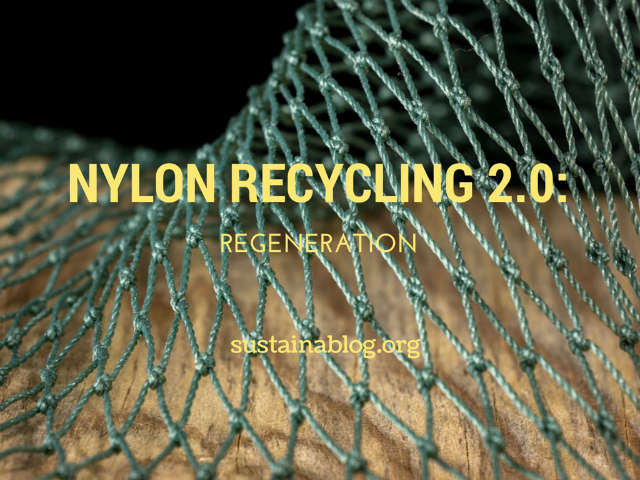The secret’s out on plastics recycling: generally, they get “downcycled” into a lesser material that can’t be further recycled. Getting more use out of that plastic is certainly beneficial, but they’re not recyclable in the way, say, glass and aluminum are. That’s a problem not only because new plastics inevitably means drilling for more oil and natural gas, but also that the used material will eventually end up polluting a natural system somewhere.
We’ve seen one example already of a process meant to make recycled plastics recyclable. It turns out that recycling nylon – a “thermoplastic” – has also received an upgrade: carpet fiber manufacturer Aquafil has developed what it describes as a “regeneration” process for nylon 6. Take a look at the company’s video for its ECONYL regeneration system:
OK, “miracle” is perhaps a bit strong, but the company has created something pretty impressive here. Global demand for fiber is expected to grow by 30% between 2010 and 2020, and without processes like this, we’re going to have drill for a lot more oil and natural gas (the feedstocks for most synthetic fibers). Given the current state of plastics recycling, that likely means a lot more plastic pollution in landfills, waterways, and oceans. So, figuring out a way to make a widely used plastic material endlessly recyclable like glass and aluminum is a definite step forward.
So far, this process is only available for nylon 6 (the slightly less-durable cousin of nylon 6,6), and involves a combination of pre-consumer and post-consumer wastes. But nylon 6 is widely used in textiles, threads, nets, and ropes, and the company has increased the amount of post-consumer “regenerated” nylon in the ECONYL product from 30% in 2012 to 50% currently… so this process has the potential to make a significant difference. Additionally, the process of creating “virgin” nylon through this system reduces the resources needed and wastes produced to make the material: ECONYL processes reduce the energy needed to produce the raw material caprolactam by 54%, and the greenhosue gas emissions released by 55%.
Just want to find out what products contain this material? Check out their list of products and applications thus far, which includes offerings from brands like Interface, Adidas, Asics, Shapes in the Sand, and others… And if you’ve tried a product made from ECONYL, or just have thoughts to share, talk to us in the comments…
Image credit: Shutterstock

